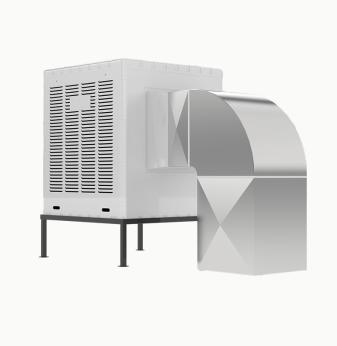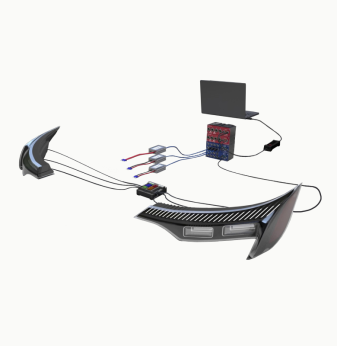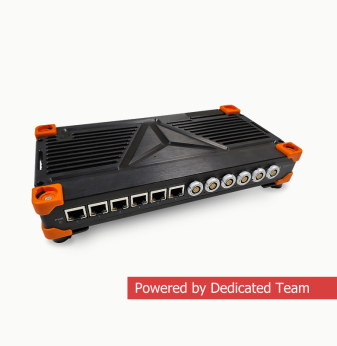How the EU Cyber Resilience Act Will Reshape the Embedded Device Market in 2025–2027

The EU Cyber Resilience Act (CRA) is not just another regulatory document—it’s a turning point for every company that designs, builds, or sells embedded and connected products in Europe. As the law moves toward full enforcement in 2025–2027, it will reshape how embedded systems are developed, maintained, and certified. This article explains what’s changing, why it matters, and how engineering teams can prepare.
What Is the Cyber Resilience Act and Why It Exists
The CRA is the European Union’s first horizontal legislation focused entirely on cybersecurity for digital products. Unlike past directives, it sets mandatory cybersecurity requirements for connected devices sold in the EU, including industrial controllers, routers, edge AI modules, EV infrastructure systems, smart home devices, and more.
The CRA aims to reduce the growing number of security incidents caused by poor design, outdated firmware, and missing protections in embedded software. It pushes manufacturers toward:
- Secure-by-design product development
- Continuous vulnerability monitoring and patching
- Clear documentation of software components (SBOMs)
- Transparent incident reporting and lifecycle support
Who Will Be Affected by the CRA
The scope of the law includes all “products with digital elements.” For the embedded systems industry, that covers:
- Industrial and energy automation systems
- Automotive ECUs, HMI units, and telematics platforms
- Telecom switches, routers, and IoT gateways
- Consumer electronics and smart home devices
- Edge AI and vision systems
- Medical devices and connected wearables
Even if the product is manufactured outside the EU but sold in Europe, the manufacturer or importer becomes responsible for CRA compliance.
What Compliance Really Means for Engineering Teams
The CRA introduces not just legal obligations but a shift in how embedded systems are designed. From the earliest stages of hardware and firmware development, engineers will need to consider:
- Secure boot, secure update mechanisms, and encryption as default
- Lifecycle support planning for security patches
- SBOM creation and maintenance tools
- Attack surface minimization and proactive threat modeling
It also affects the selection of processors, operating systems, and third-party libraries. Components that lack long-term support or have a poor vulnerability record may become non-compliant by default.
From Performance-First to Security-First Development
Historically, many embedded devices prioritized speed, efficiency, and real-time behavior. Security was often an afterthought or limited to the network level. With the CRA, this mindset must change.
Secure firmware, hardened configurations, and tested fallback procedures will become just as important as real-time performance. Development workflows will need to integrate:
- Static and dynamic code analysis
- Continuous security testing
- Traceable logging and audit mechanisms
- Integration with compliance platforms
In effect, security will move upstream in the product lifecycle—from post-release concern to design-time requirement.
What Happens If a Company Ignores CRA
Non-compliance with the Cyber Resilience Act is not a light matter. Penalties include:
- Fines of up to €15 million or 2.5% of global annual turnover
- Withdrawal of products from the EU market
- Public warnings and listing as a non-compliant manufacturer
- Legal liability in case of damage from exploited vulnerabilities
For vendors and OEMs, this is not only a regulatory risk—it’s a reputational one. A single uncovered vulnerability in a shipping product may trigger investigation across the whole portfolio.
Challenges for Legacy and ODM-Based Products
Many vendors rely on white-label designs, ODM suppliers, or legacy platforms that haven’t been updated in years. Under CRA, this becomes a major liability. In these cases, companies face two options:
- Retire or re-engineer legacy products with no clear path to compliance
- Build new platforms from scratch with secure-by-design principles
The same applies to ODMs: their platforms must now come with security guarantees, documentation, and support workflows—otherwise, clients will have to look elsewhere.

Opportunities for Early Movers
Despite the complexity, CRA compliance is also an opportunity to lead the market. Companies that offer:
- Pre-certified, secure embedded platforms
- Secure firmware over-the-air (OTA) systems
- CRA-aligned edge computing modules
- Compliance documentation as part of the delivery package
will become preferred partners for European OEMs, especially in regulated markets like automotive, energy, and industrial automation.
Vendors who act now can establish market trust, reduce future refactoring costs, and win projects before competitors adapt.
What We See in the Market at Promwad
At Promwad, we’re already seeing the shift. Clients building telecom, energy, and automotive platforms are requesting:
- Hardened Linux systems with verified update mechanisms
- Support for cryptographic authentication and secure bootloaders
- Integration of SBOM tools and vulnerability scanners into CI/CD pipelines
- Firmware workflows mapped to IEC 62443 and ISO 21434 frameworks
In most cases, these requests are driven by either internal compliance teams or partners preparing for CRA rollout.
How to Get Ready: A Practical Checklist
For product teams building embedded systems today, preparation should start with:
- Risk analysis and security assessment of current product lines
- Component evaluation for CRA compatibility (OS, MCU, libraries)
- Security architecture design at the system and firmware level
- Adoption of SBOM tools and secure development toolchains
- Integration of update management for over-the-air patching
- Documentation workflows for compliance reporting and audits
Working with a partner that understands embedded security—not just general software—will speed up this transition.
Looking Ahead: CRA in 2025–2027
While the law will roll out in stages, most obligations will become enforceable between mid-2025 and late 2026. By 2027, non-compliant products may be entirely blocked from EU markets.
Engineering leaders should treat 2025 as the final year for redesign, not the start. Vendors who wait until enforcement begins will face production delays, legal exposure, and urgent redesign work under pressure.
The CRA is not going away—it’s the new baseline.
Final Thoughts
The Cyber Resilience Act changes the game for embedded systems. It demands new engineering habits, better architecture planning, and a long-term view of security and compliance. For companies building smart, connected devices, the next 18–24 months will define whether they lead—or scramble to catch up.
By acting now, vendors can turn regulation into differentiation, compliance into trust, and engineering discipline into long-term growth.
Our Case Studies












